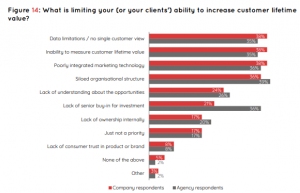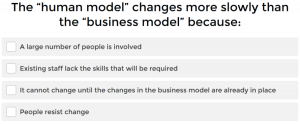Even if you’re not a pro when it comes to social media, there are certain caveats you can prevent yourself from falling in. If you’ve been tasked with building up your company’s fan base, engagement and “virality,” don’t panic! And for heaven’s sake, don’t start making blunder after blunder that will see your engagement sink like a stone, your efforts punished, or your audience go unsatisfied or ignored. Here are some of the most common social media mistakes – and how to avoid them.
1. Buying Fans
It can be incredibly frustrating when you’re starting your own business. People land on your Facebook or Twitter page and it feels about as awkward as being the first one at a party. They might hang around the bar for a few minutes trying to blend in, before deciding that the place blows and they won’t be coming back.
But you had so much interesting conversation to engage them in – not to mention some pretty great moves on the dancefloor! That person would have stayed around if the place was buzzing with people and full of free booze, right?
Wrong. Well, partially, anyway. You see, the only thing worse than turning up at a party early is being at one packed wall-to-wall with fakes and phonies. Hostile people who ignore you and have nothing in common. The free booze? Well, that might compensate a little, but their chances of going back again are still pretty slim. Unless you’re serving Chandon on tap. But your budget probably doesn’t cover that.
I’m rambling, but you get the point — don’t buy fans. When you buy likes or followers, you’re buying people who have little or no interest in your brand. They may even be fake accounts. Which means that there will be zero engagement with your posts and (even if the place is packed), no one’s having any fun.
Worse than that? Facebook’s algorithm punishes you for buying likes, or rather, for a suspiciously low level of post engagement. Which means that your posts will be shown to less people and all your efforts to be popular (including the free champagne) won’t pay off.
The best (and only) way to build up a fan base across your social media platforms is with patience and great and content. Provide a consistent stream of valuable, relevant, interesting content to your fans; and your likes, shares and clicks will grow organically.
2. Posting Whatever You Feel Like
Your vivacity and spontaneity may be one of the things your friends love most about you, but that doesn’t lend well to your social media accounts. Especially when you’re representing a brand or company. Even if you are representing yourself, it’s still a dangerous game to drink and tweet. Or post whatever you feel like without thinking the consequences through. Sound like anyone you know?
You may hold very strong political beliefs, for example, but tweeting regularly about how dangerous Donald Trump is may lose you a large number of customers. So, try to follow the dinner party rule and stay away from controversial subjects, like religion and politics. And probably immigration, terrorism, and grabbing women by their private parts.
You work hard to build up a community in which your fans feel comfortable to express themselves. The last thing you want is for people to start leaving because your strong opinions make them feel awkward, like the deafening silence around a dinner table as you reveal a family secret.
What you write on your social media channels will be synonymous with your brand and your voice is by default an extension of it. So, think before you speak and have a posting plan. It’s far more effective when you post with a cool head and stick to a plan. In fact, a posting schedule can help to double your traffic.
3. Not Localizing Your Social Media Advertising Campaigns
If you have customers in different geographical regions, with different cultures, speaking different languages — then why speak to them all in the same voice through your social media? Facebook Global Pages allow you to localize the content of your adverts, so that you can speak to customers in their own language and create a message and offer targeted to their wants and needs.
You can create content that resonates with an audience in one location, let’s say cheese and wine to the French; while advertising a different promotion or post in another region, like donuts to the Americans. You’ll need to know your audience a little more deeply than that to localize your content effectively and create a message that will be culturally relevant and tailored to your audience — but, you get the idea.
The tools are in place through social channels without having to go all out and translate your website content. Instead of announcing a winter promo to customers dying of heat in the southern hemisphere, you can make your offers relevant.
So, if you’re starting from scratch, then make sure you start out right. Build your following organically, plan your posts in advance (and maybe get them approved by an extra pair of eyes) and localize your offers to different regional audiences. There are a ton of online translation services providers who can help you craft engaging messages for your foreign-speaking fans. So, you don’t have to do this alone, or fumble around using machine translation that may get you laughed at for all the wrong reasons.
Social media is a powerful marketing tool. When used in the right way, you can increase your ROI in terms of both money and time — and avoid the common mistakes made time and again by rookies in this field.
Digital & Social Articles on Business 2 Community(4)






